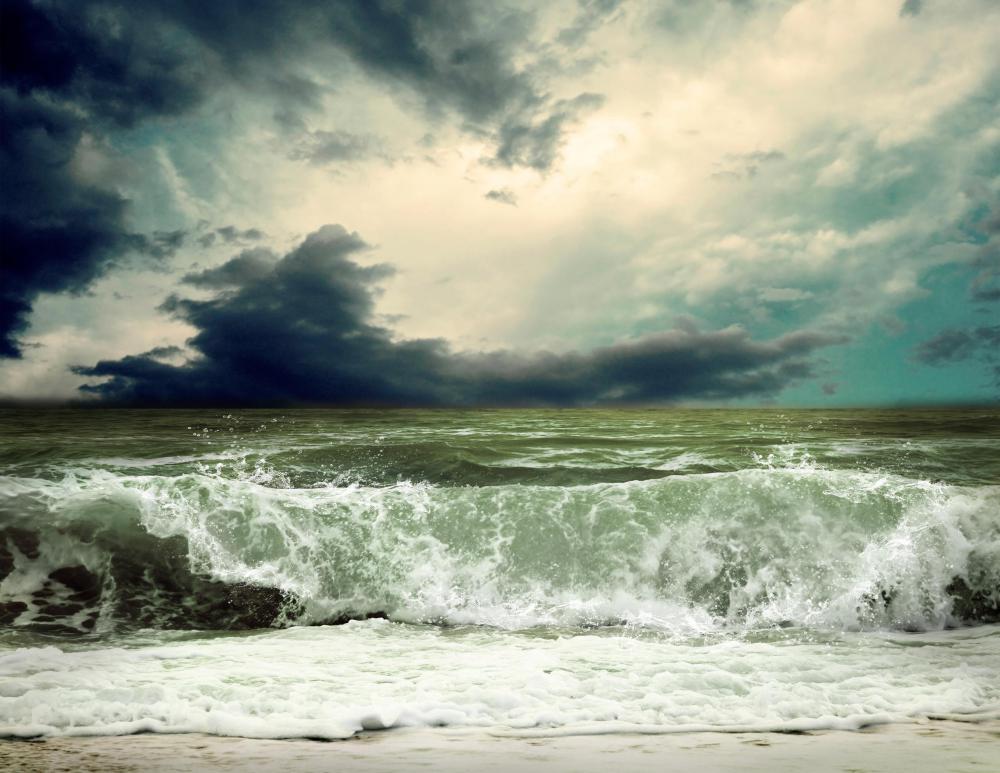At AllThingsNature, we're committed to delivering accurate, trustworthy information. Our expert-authored content is rigorously fact-checked and sourced from credible authorities. Discover how we uphold the highest standards in providing you with reliable knowledge.
What is a Petrel?
A petrel is a bird in the order Procellariiformes. These birds live a pelagic lifestyle, remaining at sea for much of their lives and only returning to shore to breed. As a result, they are closely associated with the ocean, and there are many legends about petrels in the sailing community. Some coastal regions host large petrel colonies during the breeding season, most notably in Antarctica, where several species return to breed.
Several features can be used to distinguish a petrel. If you spot a bird while you are out on the open ocean, chances are high that the bird is a petrel. Petrels are also typically dark on the upper side, and white on their undersides, camouflaging them from predators and prey, respectively. The birds classically have short tails shaped like wedges, and large wingspans, with tubular noses, assuming that you can get close enough to a petrel to examine his or her nose.

Petrels have bodies which are designed for tireless flying, allowing them to seek out fish and other seafood for their meals. When the birds tire, they can rest on the water to build up strength before taking off again, and some have also been known to rest on passing boats. The name “petrel” comes from the Biblical story of Peter, the Apostle who walked on water with Christ, referencing the fact that petrels often skim so close to the water that they appear to be walking on it.

There are four families within the petrel order. Stormy petrels are small petrels with a fluttering style of flight, while diving petrels are adapted for diving to look for prey. Albatrosses are also part of the petrel order, and they are among the largest flying birds in the world, making them rather distinctive. Shearwaters, fulmarine petrels, gadfly petrels, and prions belong to the family Procellariidae, a large and very diverse family within the larger petrel order.
Petrels can be found on all the world's oceans. Historically, petrels were sometimes associated with bad luck, with sailors viewing a petrel as a sign that a storm was on the way. Petrels were also viewed as tokens of good luck in some cultures. Other superstitions also abounded about specific members of the petrel family. Albatrosses, for example, were taboo to kill, since some sailors believed that they carried the souls of sailors lost at sea.
Some petrels are endangered, for a variety of reasons. These birds are very vulnerable to pollution in the world's oceans, ingesting creatures which have been poisoned with pollutants and becoming entangled in garbage. They are also at risk on land, as petrel colonies are considered prime targets for many predators who seek out the birds while they are slow and ungainly on land. Availability of land for nesting is also an issue in some coastal regions, with researchers pushing to create designated nature preserves specifically for petrels and other sea birds.
Frequently Asked Questions
What is a petrel and where can they be found?
Petrels are a diverse group of seabirds belonging to the order Procellariiformes, which also includes albatrosses, shearwaters, and fulmars. They are known for their exceptional flying abilities and spend most of their lives at sea, only coming to land to breed. Petrels can be found across all the world's oceans, with some species favoring specific regions, such as the Southern Ocean for the Snow Petrel.
How do petrels adapt to their oceanic lifestyle?
Petrels are supremely adapted to an oceanic existence. They have tubenoses, which are nostrils encased in a tube on top of the beak, helping them excrete salt and smell prey at great distances. Their long wings enable efficient gliding over the water, and their webbed feet assist in swimming. Petrels also have a stomach oil that can be used as a food source or defense mechanism.
What do petrels eat?
Petrels are predominantly carnivorous, feeding on a diet that includes squid, fish, and crustaceans. They are opportunistic feeders and may also scavenge on carrion or offal. Some species, like the Storm Petrel, pick food items from the water's surface, while others, like the Giant Petrel, are capable of diving to pursue prey underwater.
How do petrels reproduce and raise their young?
Petrels are known for their solitary nesting habits, often breeding in remote and inaccessible locations. They lay a single egg in a burrow or on cliff ledges, and both parents share incubation duties. After hatching, the chick is fed regurgitated food until it is ready to fledge. The breeding cycle is long, and chicks may take up to three months to become independent.
Are petrels endangered?
The conservation status of petrels varies widely among species. Some, like the Snow Petrel, are not considered at risk, while others are threatened by factors such as habitat destruction, introduced predators, and pollution. The critically endangered Balearic Petrel, for example, faces threats from human activities and invasive species, according to BirdLife International's data on seabird conservation.
What role do petrels play in their ecosystems?
Petrels play a significant role in their marine ecosystems as both predators and scavengers. They help control fish and squid populations and recycle nutrients by breaking down carcasses. Their guano also enriches isolated ecosystems where they breed, supporting a variety of plant and animal life. Thus, petrels are important indicators of ocean health and biodiversity.
AS FEATURED ON:
AS FEATURED ON:












Discuss this Article
Post your comments